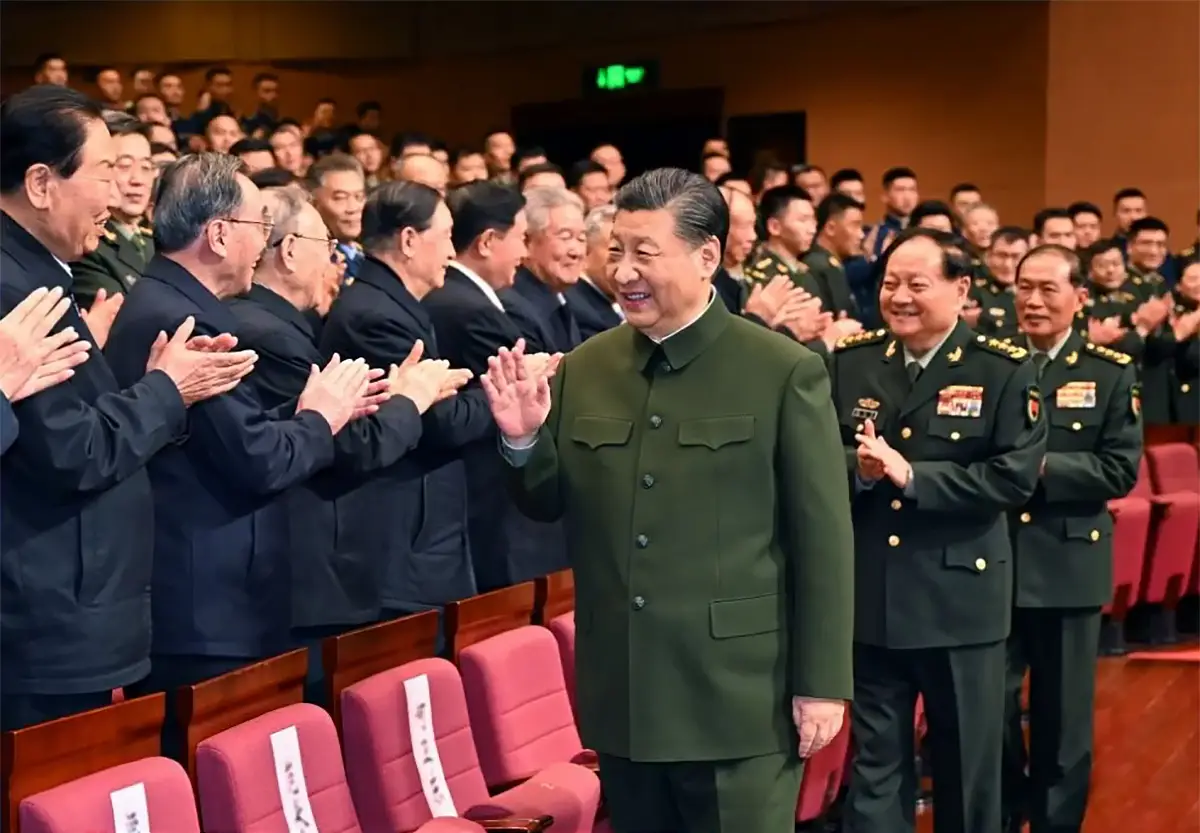While concerns about the threat of terrorism have dominated conversations about national security for nearly two decades now, the nature of the threat to Americans has slowly been shifting. Islamist terrorists still kill thousands of people every year, but in recent years, they have posed little threat to the American homeland. According to an Anti-Defamation League report, in 2019, violent Islamists were not linked to a single domestic extremist killing. By contrast, violent right-wing extremists were linked to 90 percent of domestic extremist killings in 2019. And critically, as one expert noted, “Murders and other violent attacks perpetrated by U.S. far-right extremists compose the visible tip of an iceberg. The rest of this iceberg is under water and out of sight. It includes hundreds of attacks every year that damage property and intimidate communities.”
None of this is news to those working on terrorism. On March 3, FBI Director Christopher Wray testified to the Senate Judiciary Committee that, “The problem of domestic terrorism has been metastasizing across the country for a long time now and it’s not going away anytime soon.” He went on to note that the number of investigations had almost doubled (from about 1,000 to about 2,000)—and the number of arrests had almost tripled—since 2017.
In the wake of the January 6 U.S. Capitol attack, though, and under the guidance of a new administration, a veritable avalanche of op-eds and analytic pieces have been written about the threat posed by right-wing violent extremists. Some of these contain sound advice; others are troublingly reactionary. The issue is complicated, and there are no simple approaches, but the lessons of the past two decades make it possible to articulate a few clear guiding principles for navigating the coming weeks, months and years.
First, the U.S. should resist the temptation to declare war on right-wing violent extremism. America is problematically fond of declaring wars. We have, since the Nixon presidency, waged or navigated wars on a laundry list of social and political concerns including poverty, hunger, drugs, cancer, terror, Christmas and women. It is hard, though, to identify an instance in which this language was genuinely helpful. Instead, it imports a host of troubling paradigms and approaches that are often counterproductive. It predisposes Americans to aggression (instead of compassion), to fight (instead of negotiate) and to demonize (instead of humanize). This isn’t to suggest that the response to domestic terrorism should be unconditional compassion; terrorism is a horrible tactic that takes innocent lives and destroys families. However, a one-dimensionally aggressive and demonizing approach was a counterproductive strategy when our issue was with Islamist extremism, and the negative consequences will be similarly problematic when we approach our friends and neighbors this way.
Second, we must be nuanced in our understanding of the difference between holding extremist ideas and committing violent actions in support of these ideas. Holding extremist ideas is a right guaranteed to every American; committing violent actions in support of these ideas is not. As we move forward, it is critical that we differentiate between those who hold extremist ideas (which is legal) and those who commit violent acts in support of these ideas (which is illegal). This isn’t to suggest that extremist ideas aren’t an issue; those who engage in violent extremist actions almost always hold extremist ideologies. But critically, most extremist ideologues do not commit acts of violence. White supremacy, as just one example, is a pernicious and abhorrent ideology that has plagued America since its earliest days and that advocates for structurally and systemically violent systems, but only a small percentage of white supremacists commit acts of political violence or domestic terrorism. Differentiating between the violent and the non-violent won’t be easy, and some will want to argue that membership in an extremist organization constitutes active participation in political violence. This is a complex issue with no simple solutions. As just one example, white supremacists have made sporadic calls for an NAAWP—a National Association for the Advancement of White People—for over 50 years. Such an organization would presumably advance a structurally and systemically violent social structure, but such an organization would also presumably disavow political violence and domestic terrorism in favor of seeking redress via legislation and policy. There is an urgent need to address both types of violence, but the problem of structurally and systemically violent systems is different from the problem of violent extremism or domestic terrorism. Each will, as a result, require a different solution and we will likely do more harm than good if we conflate them. Doing so, in fact, risks radicalizing additional people, much as the U.S. contributed to the radicalization of a subset of the Iraqi population as a result of its clumsy 2003 intervention. The government cannot be in the business of regulating what people think; it can only respond to the illegal actions that they take.
Third, we should protect against and prosecute actions, and we should avoid discussions that focus on intentions. It will be tempting, as we see our neighbors and colleagues and relatives on trial, to judge them based on their intentions. This is, in fact, already happening, as a defense attorney for a woman arrested with connection to January 6 U.S. Capitol attack recently argued, "However misguided, her intentions were not in any way related to an intention to overthrow the government, but to support what she believed to be the lawful government. She took an oath to support the Constitution and had no intention of violating that oath or of committing any violent acts." The argument, in short, is a request that we ignore her (allegedly illegal) actions and focus instead on her (allegedly patriotic) intentions. It is, in some ways, a version of the approach that we took in the post-9/11 era, when we allowed our biases to rule. In that era, Americans amplified religious and racial differences and saw the worst in others; in this moment, we risk amplifying ideological similarities and seeing the best—excusing illegal actions on the grounds of the perpetrator’s intent. A person’s intentions are not irrelevant (e.g., a murder committed with the intention to save one’s own life is different from a murder committed with the intention to steal a car), but the highly polarized and partisan nature of the moment will almost certainly impede our ability to judge without bias. If we allow ourselves to become ensnared in conversations about intentions, we risk further inflaming the partisan divide by treating our ideological allies sympathetically and our ideological foes harshly. Focusing on actions, by contrast, provides a more impartial path forward and may help to restore faith in the rule of law.
The path forward will be difficult, complicated and painful for a host of reasons. The good news is that we have learned an immense amount in the years since 9/11. Unfortunately, not everything we did after 9/11 was productive. Replicating the mistakes that we made in the last two decades—adopting a war mentality, conflating violent actions and extremist beliefs, and allowing bias to influence our assessments—will likely make the situation worse.



